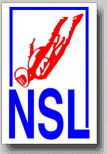
National
Skydiving
League
226 Pecan Street
Deland FL 32724
tel: (386) 801-0804
© 2003 - 2025
All Rights Reserved


226 Pecan Street
Deland FL 32724
tel: (386) 801-0804
© 2003 - 2025
All Rights Reserved


Block 5 missed its chance in Eloy and was actually hiding again in Richard Schachner's draw box, even after ten rounds were already drawn. The Shamrock management decided to make an adjustment of the competition draw to give teams and judges the opportunity to learn more about the overhauled block under meet conditions.
Opal - Opal was part of round eleven at the competition draw Friday evening at the DeLand Holiday Inn. The meet management asked the teams and competitors for a vote, and the vast majority agreed to replace an earlier round with the drawn sequence for round eleven (P-L-5-6). The faster sequence M-C-N-10 was sacrificed to give Block 5 a show-off.
It was surely interesting and worth the sacrifice and effort on Friday evening. The new Block 12 did not offer many varieties at the Valentine's Meet in Eloy, while Block 5 was still performed in several different ways in DeLand. In fact, teams showed a total of six different techniques for Opal - Opal at the Shamrock Showdown.
The most popular technique in DeLand was the one that Airspeed Odyssey member Craig Girard had already introduced and explained in the NSL News story of February 11: "Rotation is always quicker than only sheering, and rotating forward is easier than backward."

DeLand Majik, Germany's teams EADS and Remscheid rotated both pieces backward, while the front pieces were also on the high side during the vertical maneuver. These three teams voted for memory and slot switches, as well.
Memory and slot switches were also chosen by Sweden's team 42 and TeiwaZhills, while the pieces rotated forward. Both teams avoided vertical maneuvers, the trained Swedish team apparently on purpose, the untrained TeiwaZhills probably by chance.
The Austrian Monkey Circus and the Glitter Pimps decided to avoid memory and slot switches and accepted mirror imaged pages. Both teams rotated the pieces forward and used vertical techniques. The Austrian team sent the rear piece over, while the Glitter Pimps had the front piece on the high side.
Forward rotation Memory/slot switches Front piece over (left) | Forward rotation Memory/slot switches Front piece over (right) | Backward rotation Memory/slot switches Front piece over (left) | Forward rotation Memory/slot switches Horizontal technique | Forward rotation Mirror image Front piece over (left) | Forward rotation Mirror image Rear piece over (left) |
DeLand Fire | Italy Sinapsi PD | DeLand Majik | Sweden 42 | Glitter Pimps | Austria Monkey Circus |
Golden Knights | Belgium Spa Hayabusa | Germany EADS | TeiwaZhills | - | - |
Fastrax | - | Germany Remscheid | - | - | - |
Norway Arcteryx | - | - | - | - | - |
Each team seems to have enough options to choose from. Some teams might still change their techniques for Block 5. However, it was also interesting to see that the block times for different techniques were not too far away from each other. The average times of the top teams applying the forward rotation (Golden Knights: 1.6 sec, DeLand Fire: 1.8 sec, Sinapsi PD: 1.9 sec, Fastrax: 2.0 sec) were not faster compared to DeLand Majik's backward rotation (1.7 sec). DeLand Majik and the Army team shared the fastest block time of 1.3 seconds.

Round three included a penalty situation for Fastrax. The infringement caused a 1-point deduction, which could have been a 2-point deduction, as well. The NSL-TV audience has another opportunity to practice more on-line judging. Where is the penalty situation, what happened, and how many points should be deducted from the total of 22 points in time? The options can be discussed in the according topic of the NSL Forum.